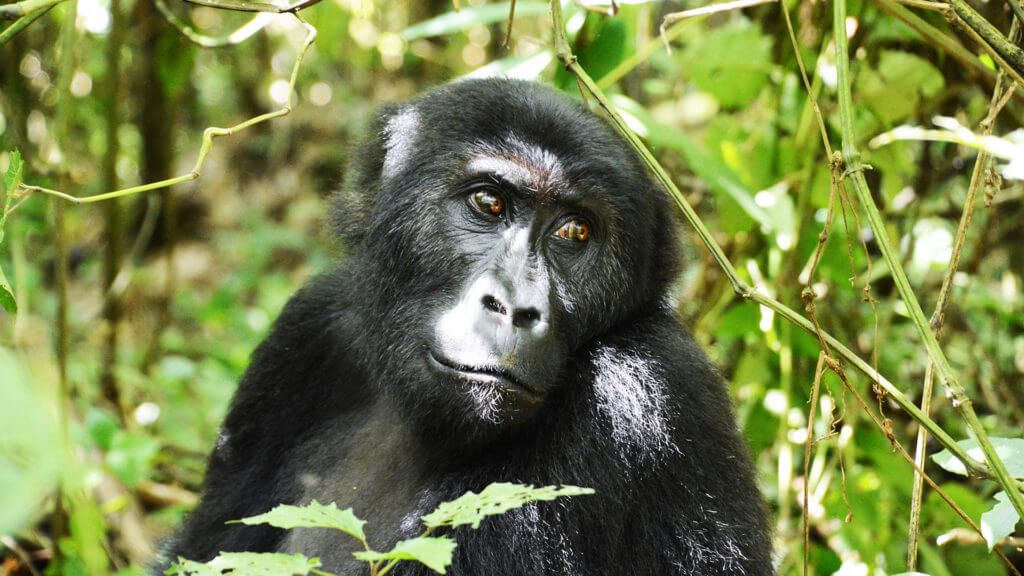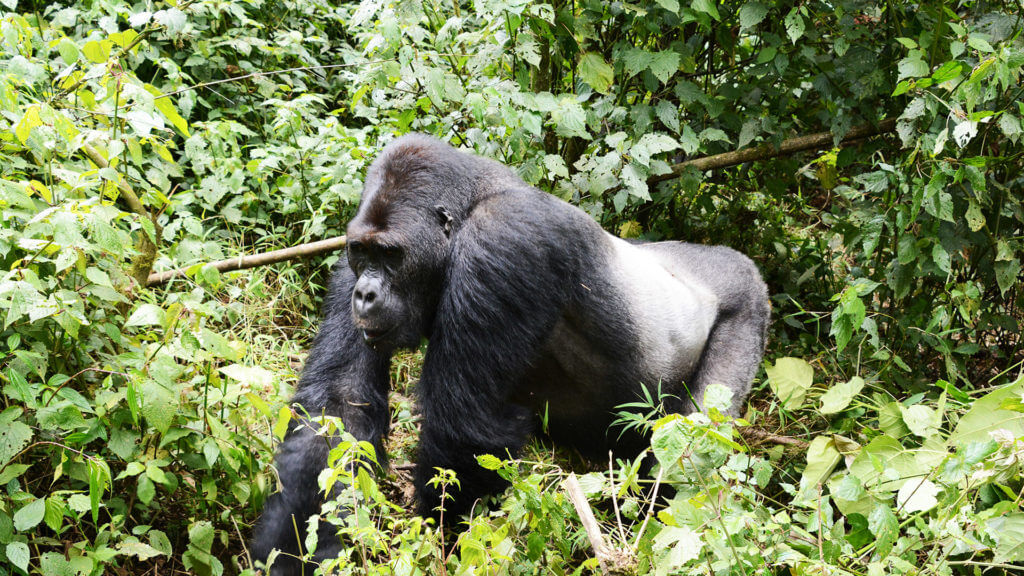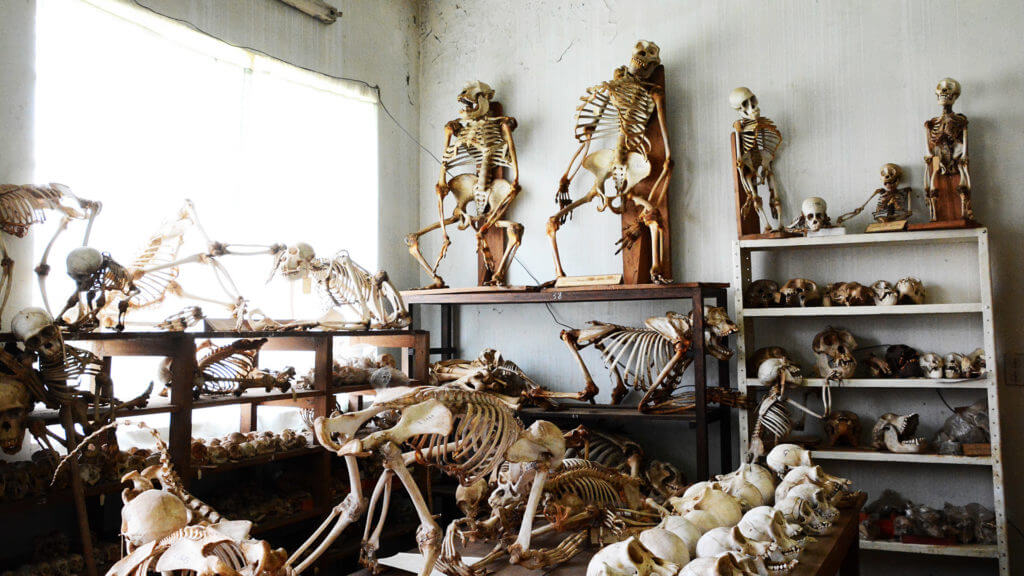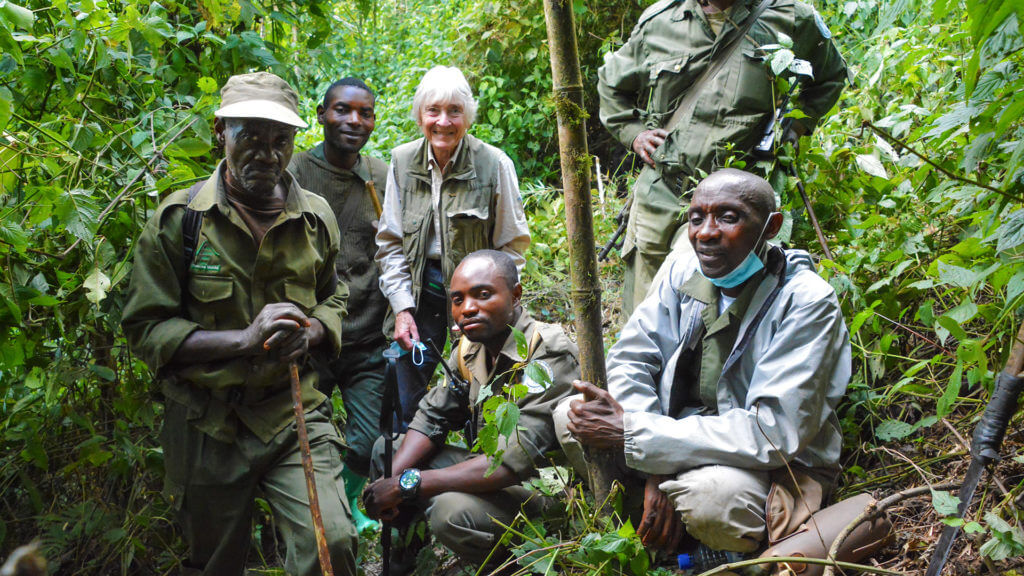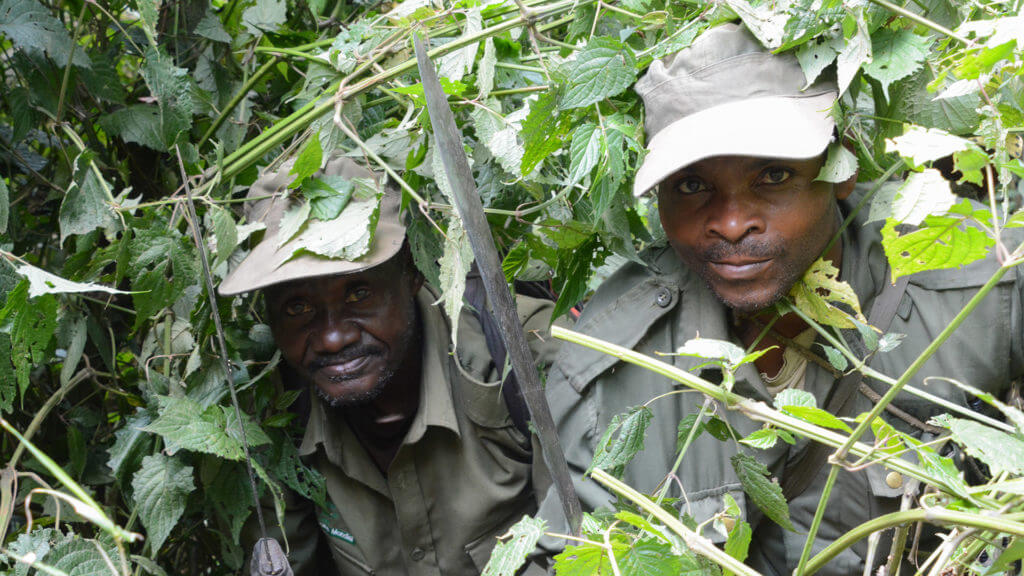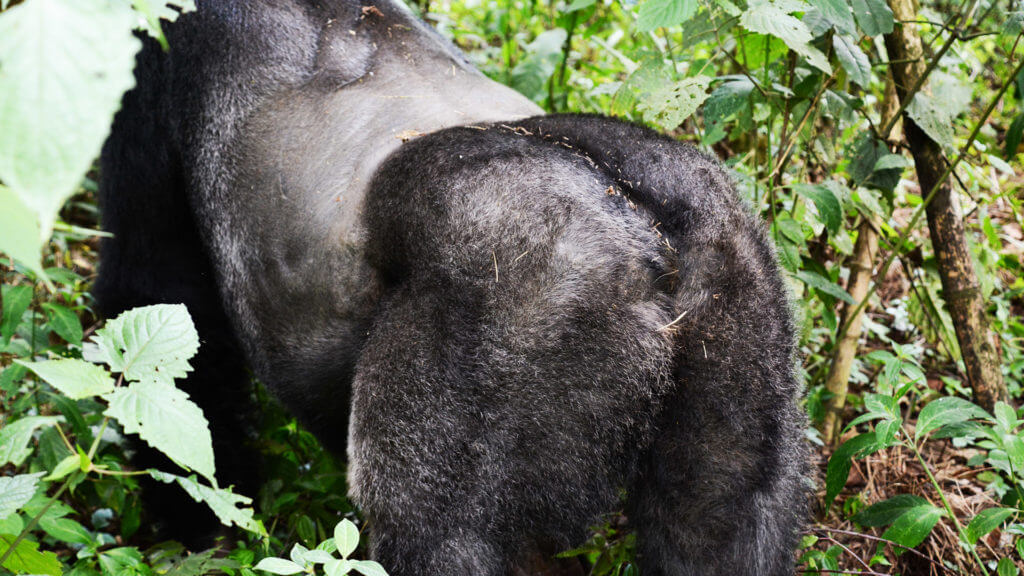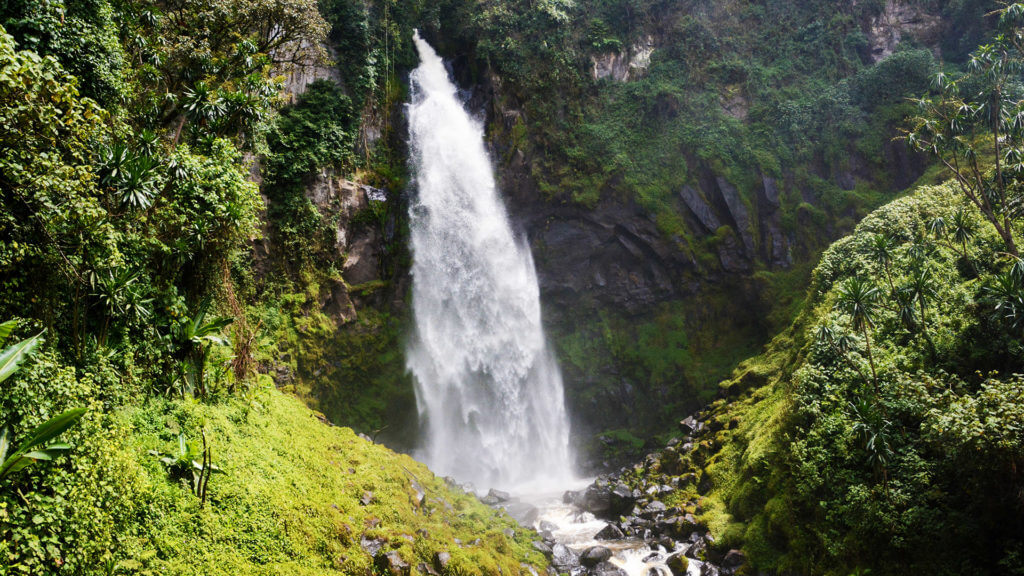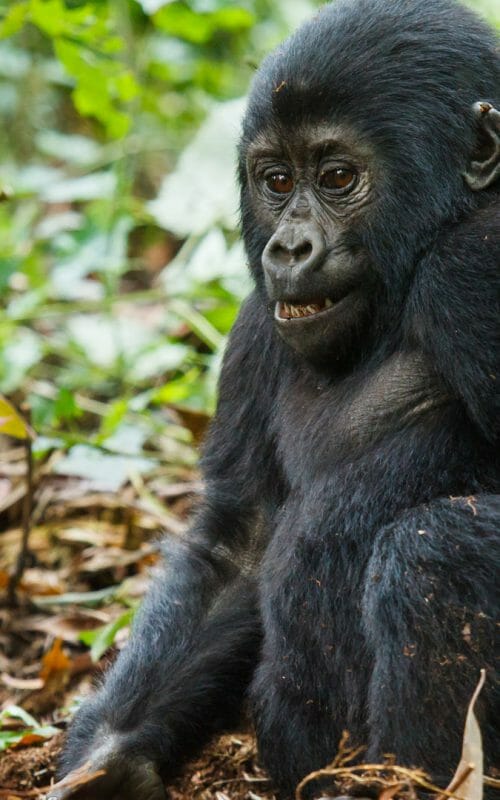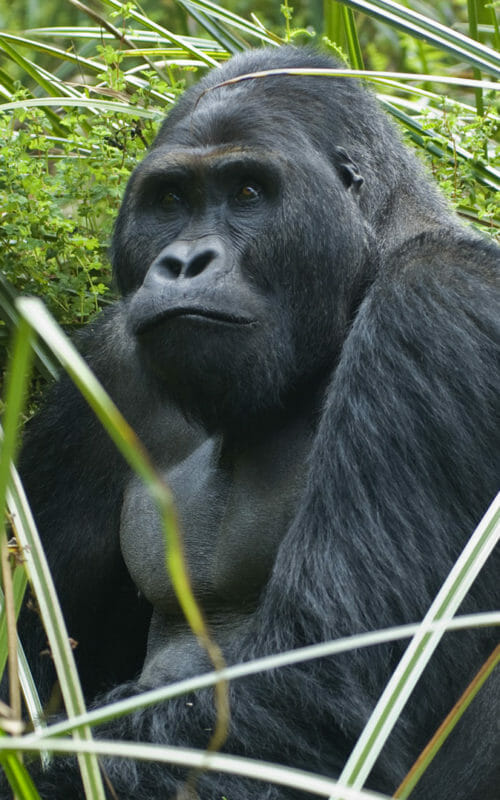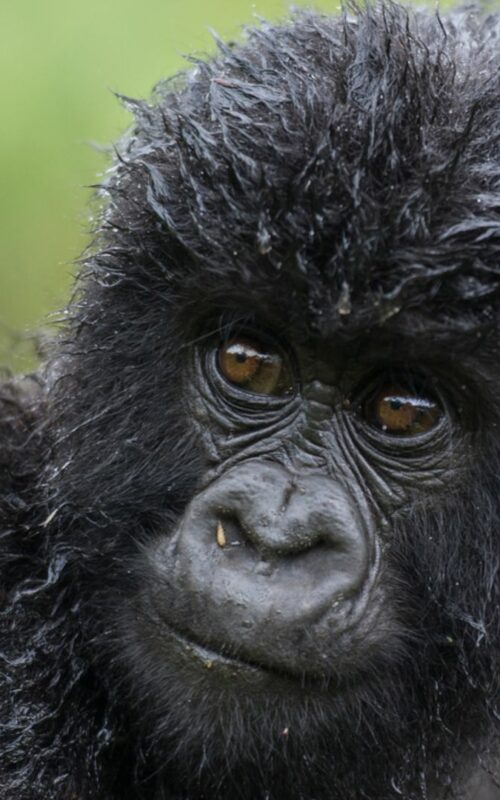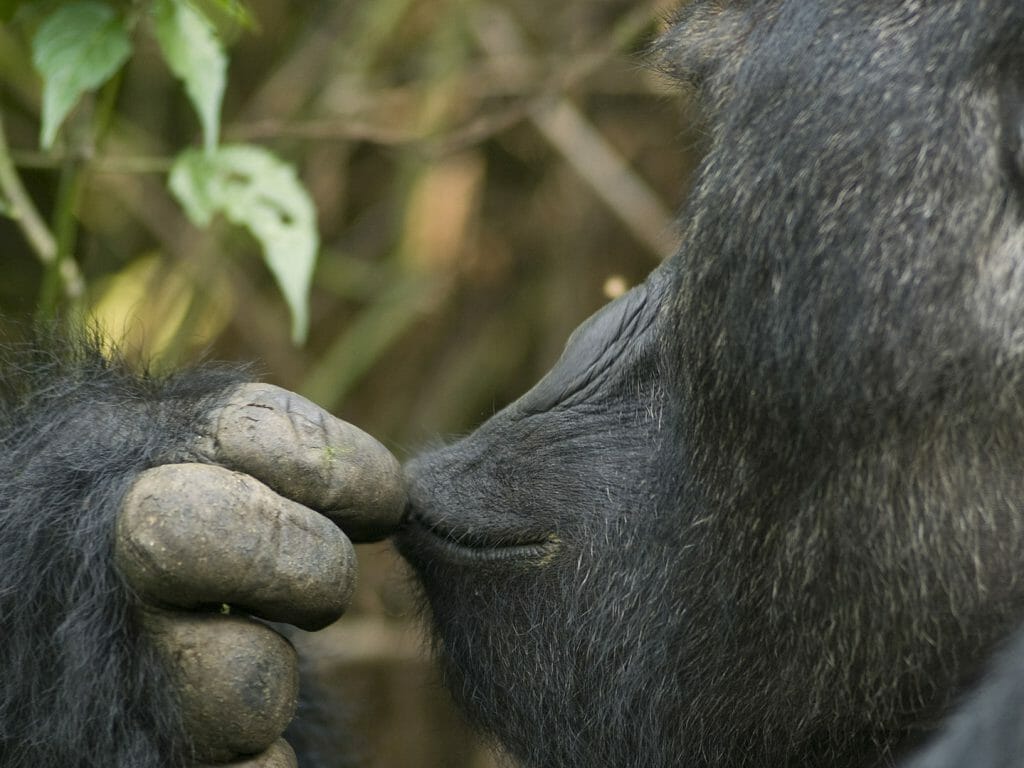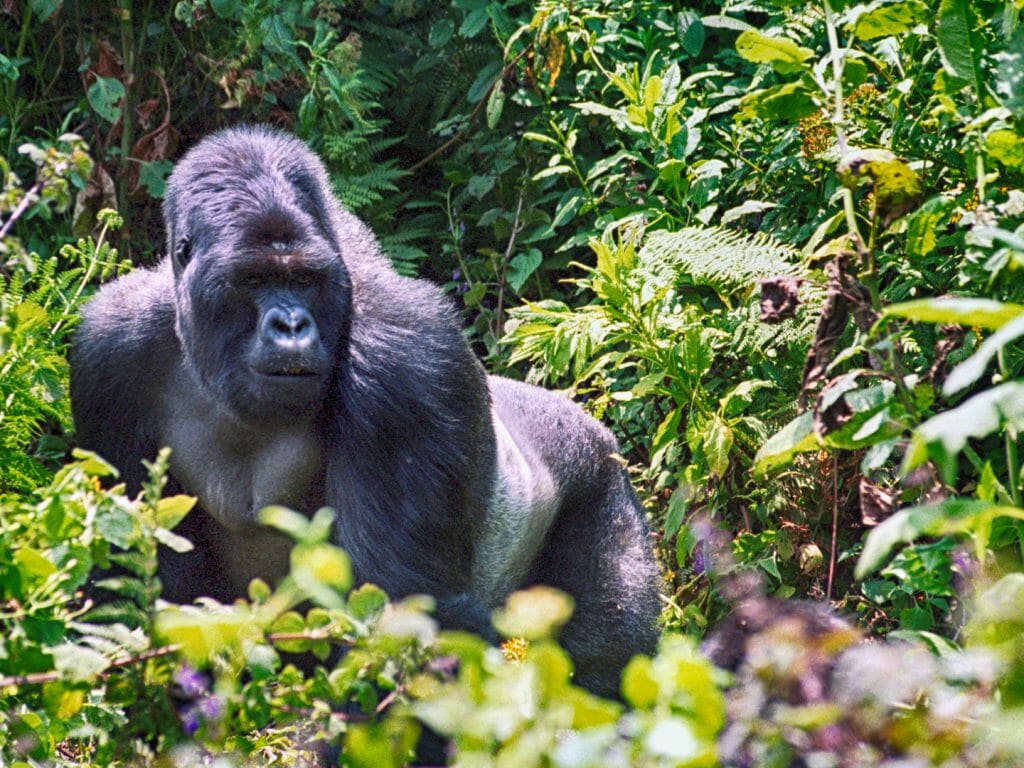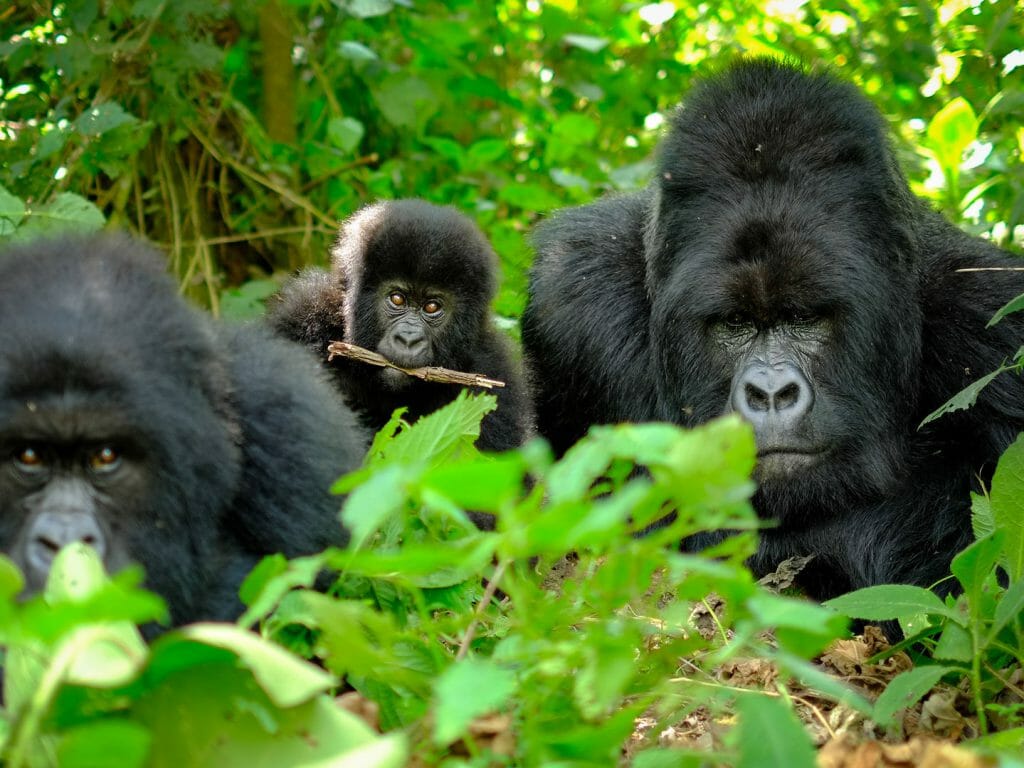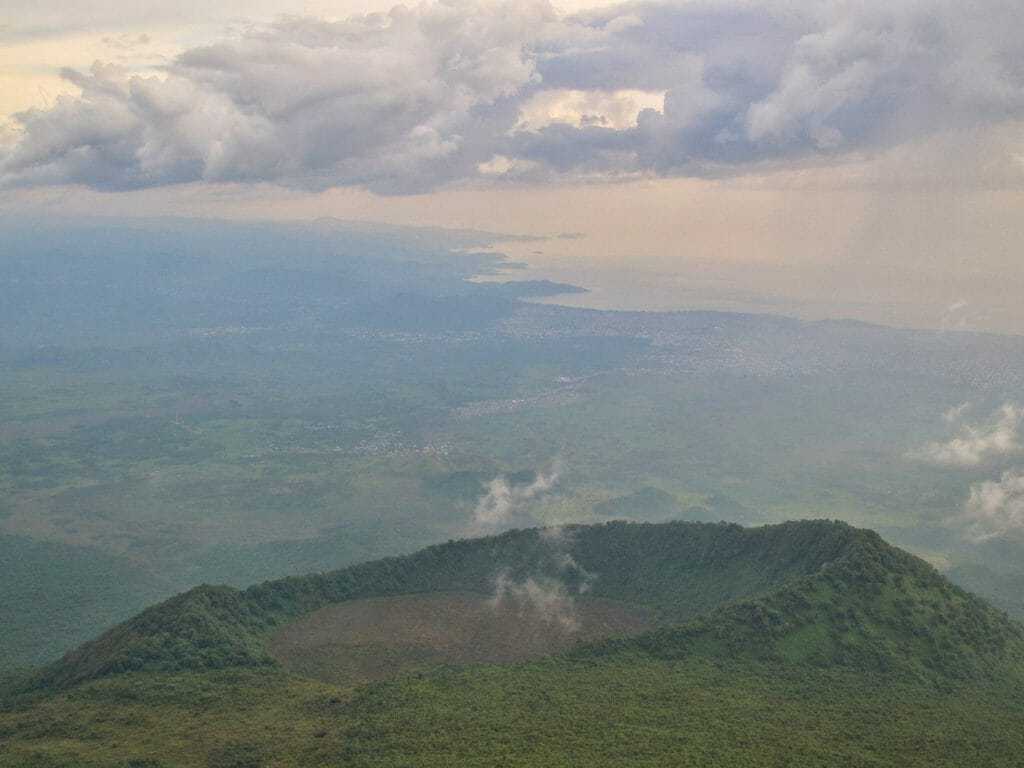Written and Photographed by our client, Nicky Dunnington-Jefferson.
He was big, very big…the biggest of the big, in fact. And he was strong, yes, super strong. Muscles rippled through his torso underneath his coat of hair and his haunches were Herculean. But it was his beautiful bottom that first caught my eye. Who was he? He was Chimanuka, a silverback eastern lowland gorilla. These gorillas are also known as Grauer’s gorillas (Gorilla beringei graueri), after a German of that name.
I first tracked gorillas in 2007, in the forests of Dzanga-Sangha in the Central African Republic. There I followed the magnificent Makumba, leading his family of 13 through the undergrowth. It took me 11 years to repeat my great ape experience, but now, here I am, in the Democratic Republic of Congo (DRC) in September 2018, about to tackle my second gorilla adventure.
At present, in the gorillas’ world, there is both good news and bad. The good news is that mountain gorilla numbers have increased across their range and it is immensely encouraging to learn that the world total has reached over 1,000 compared to below 250 in the 1980s.
However, it should be noted that all species (and subspecies) of gorilla are listed as Critically Endangered on the IUCN Red List. There are two species: the western and the eastern gorilla, each with two subspecies—the western lowland and the Cross River gorilla, and the eastern lowland and the mountain gorilla. The Cross River gorilla, named after a river which flows through Cameroon and Nigeria, is the most endangered great ape in the world; less than 300 remain. The largest is the eastern lowland and the smallest the western lowland gorilla.
Gorilla populations range through Nigeria, Cameroon and Gabon in the west, extending through the Central Africa Republic and the Republic of Congo, then east into the DRC, Rwanda and Uganda. They are not found in Burundi or Tanzania.
But in the eastern DRC, all is not good. Virunga National Park was obliged to close in mid-2018 because of safety issues after two Western tourists were kidnapped and a female ranger killed. This was a huge blow to the burgeoning tourist industry in this region. And it was a huge blow to me, as it was where I had planned to track mountain gorillas. Undaunted, I turned my attention to eastern lowland gorillas, found only in the rainforests of the eastern DRC, including Kahuzi-Biega National Park, a UNESCO World Heritage Site, and open to visitors.
I had already been exploring Rwanda, and it was from there that I entered the DRC by road. My Rwanda guide, Alexis, had never set foot in the DRC, so it was necessary to collect another guide, François, just before the border. To say that this crossing is a smooth operation would be untrue. Getting my Rwanda exit stamp at Rusizi wasn’t too onerous, but if there is a vehicle involved, as in our case, the time taken to get the necessary paperwork sorted out can be very lengthy. Alexis was assigned this task, eventually returning and we proceeded to the DRC side. There, after a perfunctory Ebola check, I completed a small, tattered yellow form, handed my passport to François and waited while he took it to an official, thankfully returning it to me, duly stamped, after a seemingly endless wait. We were through.
Bukavu, the border town in the DRC, is chaotic, cacophonous and mighty crowded. No sooner had we set off than trouble loomed—the police, who crowded around the vehicle with threatening mien and harsh words. They accused us of incorrect paperwork—nonsense, of course. François stood firm, refused to pay a bribe, and eventually, we were waved on our way. I was deposited at Orchids Safari Club, an oasis of sanity and calm in the midst of chaos. The next day we headed for the hills.
The road to Kahuzi-Biega was shocking. Crater-sized potholes slowed us down, dust and dirt forced us to shut the windows; and buildings, either half-built or falling down, lined the sides of the road as we left Bukavu.
Upon reaching the park headquarters at Tshivanga we were offered tea and coffee, and, as a non-groupie, I was delighted that I was the only visitor that day. The young guide briefed me on the gorilla tracking procedures and also told me that the park was established in 1970 by a Belgian, Adrien Deschryver, who was its first chief warden.
At 9.15 am our team, including Alexis, set off in a parks vehicle down a dirt road, with good views of Mount Kahuzi at 3,308 metres (10,916 feet) and Mount Biega at 2,790 metres (9,207 feet), the two dormant volcanoes which give the park its name. After stopping opposite an indistinct track in the forest, we disembarked and proceeded to battle our way along this track through thick vegetation, assisted by the essential use of pangas.
Tracking primates follow a set pattern: trackers go out early to find the habituated group, then radio back to the rangers who bring the tourists to where the group has been located.
And so it was with us, except that it didn’t quite work out as planned. In our case, it was a Sunday, and I gathered that instead of using four trackers, only two, Bakongo and Oscar, were on duty that day. They had indeed found the gorillas, but instead of one remaining behind with them, both trackers came to find us to lead us to the group.
The habituated gorillas were led by the silverback, Chimanuka, but his group had mingled with some ‘wild’ gorillas and had moved on. It was nearly the rainy season when gorillas descend to the dense lower altitude bamboo forest, where the young shoots constitute a favourite food source. Now I understand the true meaning of ‘gorilla tracking’. Bakongo and Oscar set off, slashing their way through the vegetation with their pangas as they followed the discarded bamboo detritus left by the gorillas as they moved through the undergrowth, feeding as they went.
Eventually, we were told to sit down and wait. Head ranger Lambert assured me we would find the group. Finally, around 2 pm, the trusty trackers came up trumps. It was uneven underfoot but I blundered on, bludgeoning my way along the obstacle course. And suddenly there he was—Chimanuka—magisterial, yet mild in majesty. Lambert took me by the shoulders, forced a window of vision through the undergrowth and urged me to take pictures. I did. We put on masks and wherever the group moved, we followed. ‘Swish, swish’ went the pangas, and Lambert expertly manoeuvred me into position—my camera did the rest. But sometimes I just observed…
The group consisted of males of various shapes and sizes. Gorillas are identified by their nose prints, as our fingerprints identify us, and when we got back to park HQ I asked Lambert to put names to the noses of the individuals I’d photographed.
We didn’t return until 5 pm. I was bloody and battered from the spiky vegetation, but buoyant and unbowed. I’d had the time of my life.
I was very grateful to François for arranging meetings for me with two very special people in the DRC. In Bukavu, it was John Kahekwa, founder of the Pole Pole Foundation, and the recipient of the 2016 Prince William Award for Conservation in Africa awarded by the charity Tusk Trust. We met at the Orchids Safari Club and I didn’t know until he told me that his aunt had been married to Adrien Deschryver. I don’t think there is anyone who knows and understands this part of the DRC better than John and he was truly inspirational.
In Goma, Henry Cirhuza, who heads up the Gorilla Organization in the DRC, chatted to me about the ongoing problems in this beleaguered country. ‘Congo itself is a country with so much potential and was to be the locomotive of all Africa. We just need a charismatic leader with the impulse and inspiration to guide us to a better future,’ he told me. That says it all.
But despite the plight of the gorillas and their fragile existence, I was able to experience the exceptional efforts of the brave rangers who put their lives on the line to protect these magnificent creatures. And now, thanks to Chris Johnston, I was able to see more of the eastern Congo…
The day after my gourmet gorilla bonanza, we drove back up the same road but turned off in order to visit the Thiabati Waterfalls. The poorly maintained dirt road passed through agricultural land where abandoned old Belgian properties have been left to disintegrate and decay. We parked next to one such building and began to walk. It is not a difficult walk—‘facile’ on the information board—but it was deemed necessary that I be accompanied by not one but two rangers, each armed with a Kalashnikov, plus one of yesterday’s rangers, uniformed but unarmed. Three protection officers to guard me…a little excessive I thought! There are two waterfalls to visit, they are totally unspoilt, and not many visitors venture there.
Our next stop was the Lwiro Chimpanzee Sanctuary which, as well as housing chimpanzees, offers protection for a variety of small monkeys. This interested me as I was not familiar with some of the species such as owl-faced monkeys, blue monkeys and red-tailed monkeys. These are animals that have been rescued from poachers and captivity in village houses; the plan is eventually to return them to the wild.
Today’s main objective though, and Chris’s recommendation, was an old and decidedly quirky Belgian mansion. My guides knew nothing about this but it was on the itinerary and with much enquiring, we located it, a huge pink edifice with long open-air corridors, ornamental ponds and fountains which no longer play to a grand colonial tune. A lady guide led us to the first fusty, musty museum, where a variety of objects were randomly displayed; some languished behind glass-fronted doors while others had no protective door to keep them safe. Some were labelled, others not… and none in English. Our guide was quite happy for us to pick up and examine the objects…what would the British Museum think!
We moved on to the library, spread over three floors and accessible up steep, dark stairways. Here, we found a huge collection of books of all shapes and sizes, jumbled together but vaguely catalogued, all deep in dust, some in English and others in French, covering such subjects as The Mind of the Gorilla. Also on display were old printing machines and ancient maps, and everything had a sad air of neglect and was badly in need of tender loving care.
But my favourite collection was elsewhere, in the natural history section of the building. I have never seen anything like it. The curator, now with a captive audience of one, me, could not have been more helpful in trying to identify some of the more bizarre creatures on display, with the help of The Kingdon Field Guide to African Mammals…French edition. Skeletons and stuffed animals crowded the shelves; a very aggressive male gorilla skeleton and a chimpanzee still sporting pieces of skin leered at us, while a huge pile of horns, enormous bats, a mole rat, tiny beetles and an ancient zebra skin on the floor added to the amazing mix. I was mesmerised; Natural History Museum, eat your heart out.
Back in Bakavu, and now in the charge of a driver called Jules as both my guides needed to begin the long road journey to Goma to meet the boat I would catch in the morning, I just had time to visit the Cathédrale Notre-Dame de la Paix de Bukavu. I was lucky as choir practice was in progress and the singing was exquisite. There is something about African voices; they seem to rise up from the heart of the continent and I just stood and listened, enthralled.
I caught the boat to Goma along Lake Kivu the following day by the skin of my teeth…Bukavu traffic nearly left me stranded alone in the DRC. And sure enough, Alexis and François were there to meet me when the boat docked at the quayside. My short visit to the DRC was a true eye-opener which helped me to try and understand the many problems facing this troubled country. One day, perhaps, light may shine in the darkness.


